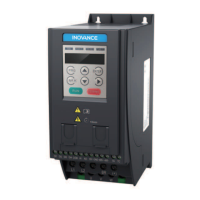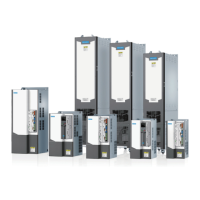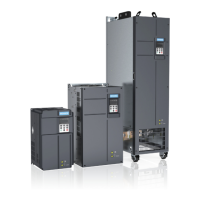MD‑SI‑DP1 Communication
‑221‑
Symptom
Solution
The
connection
fails after the
configuration
is
downloaded.
After the
configuration is
downloaded,
indicators D2 and
D4 are steady on
while the yellow
indicator D3 is off
on the MD‑SI‑DP1
expansion card.
1. Check that the cable is properly connected.
2. Check the DIP switches on the PROFIBUS DP
interfaces. The DIP switches on the PROFIBUS DP
interfaces at both ends of the network must be set to
ON, and the DIP switches on other PROFIBUS DP
interfaces must be set to OFF.
3. If the AC drive is connected at the end, check that
the communication cable is connected through IN of
the PROFIBUS DP interface. (If the communication
cable is connected through OUT, it cannot be
connected to the network when the PROFIBUS DP
interface is set to ON.)
4. Check that the station number settings on the MD‑
SI‑DP1 expansion card are consistent with the
configuration. Digit 8 of the DIP switch is the least
significant bit of the address.
5. Check that the GSD file used in the configuration is
correct.
After the
configuration is
downloaded,
indicators D2 and
D4 are steady on
while the yellow
indicator D3 blinks
slowly at the
frequency of about
1 Hz to 2 Hz on the
MD‑SI‑DP1
expansion card.
1. Check that the GSD file used is correct.
2. Check that the PZD mapping is set correctly.
Device‑specific parameters in STEP 7 and PORTAL
must be set in decimal format. Therefore, you need
to convert the parameter numbers into decimal
values when setting device‑specific parameters. For
example, the decimal value of FC‑11 is 64523 (0xFC0B
in hexadecimal format). If a parameter number that
the AC drive does not support is entered, the
connection fails. Note that PZD mapping does not
support Modbus addresses such as H2000 and H8000.
After the
configuration is
downloaded, the
yellow indicator
D3 on the MD‑SI‑
DP1 expansion
card blinks
quickly.
The PLC is not in the running status. Check the PLC
status and locate the fault cause (possibly because
the OB block does not exist).

